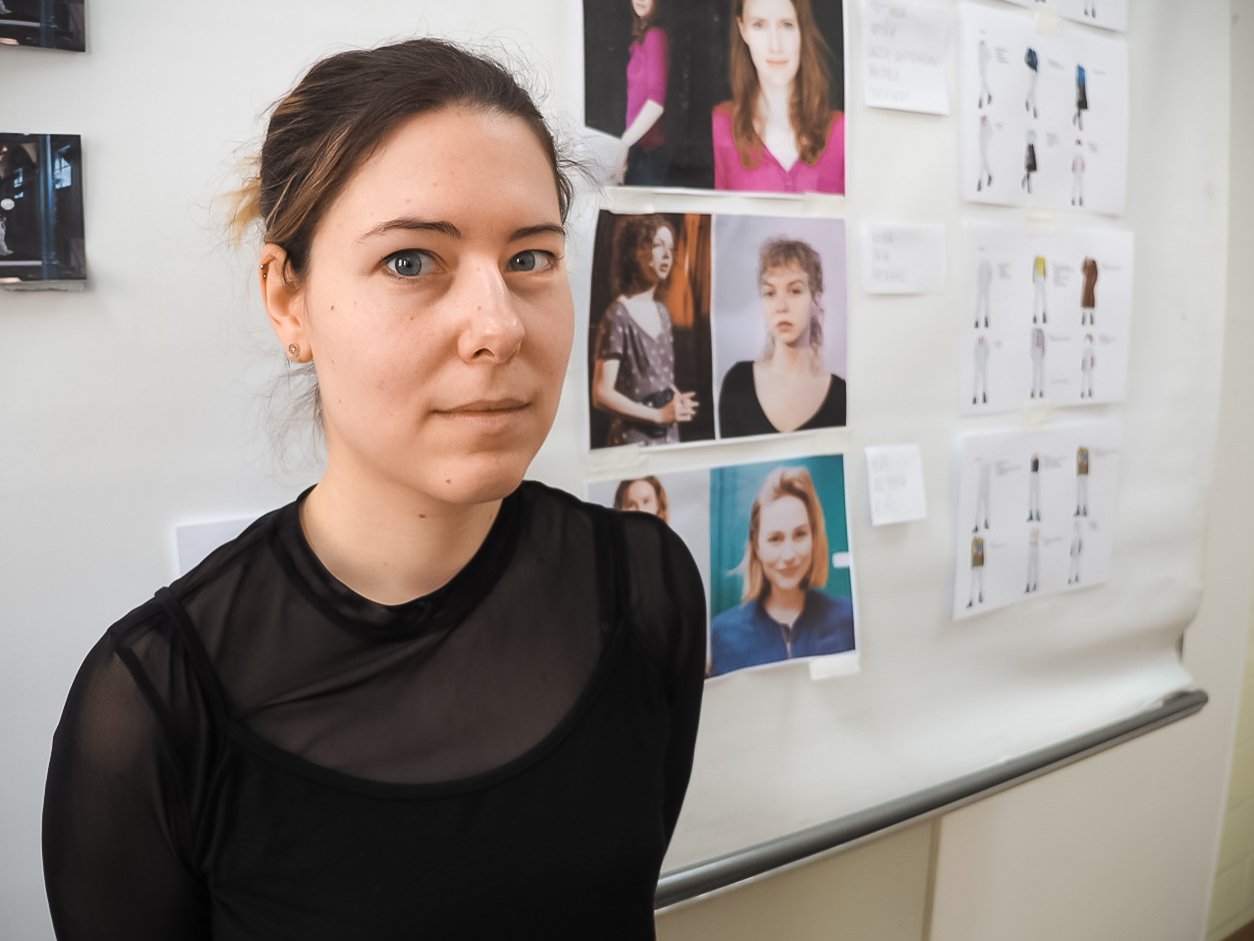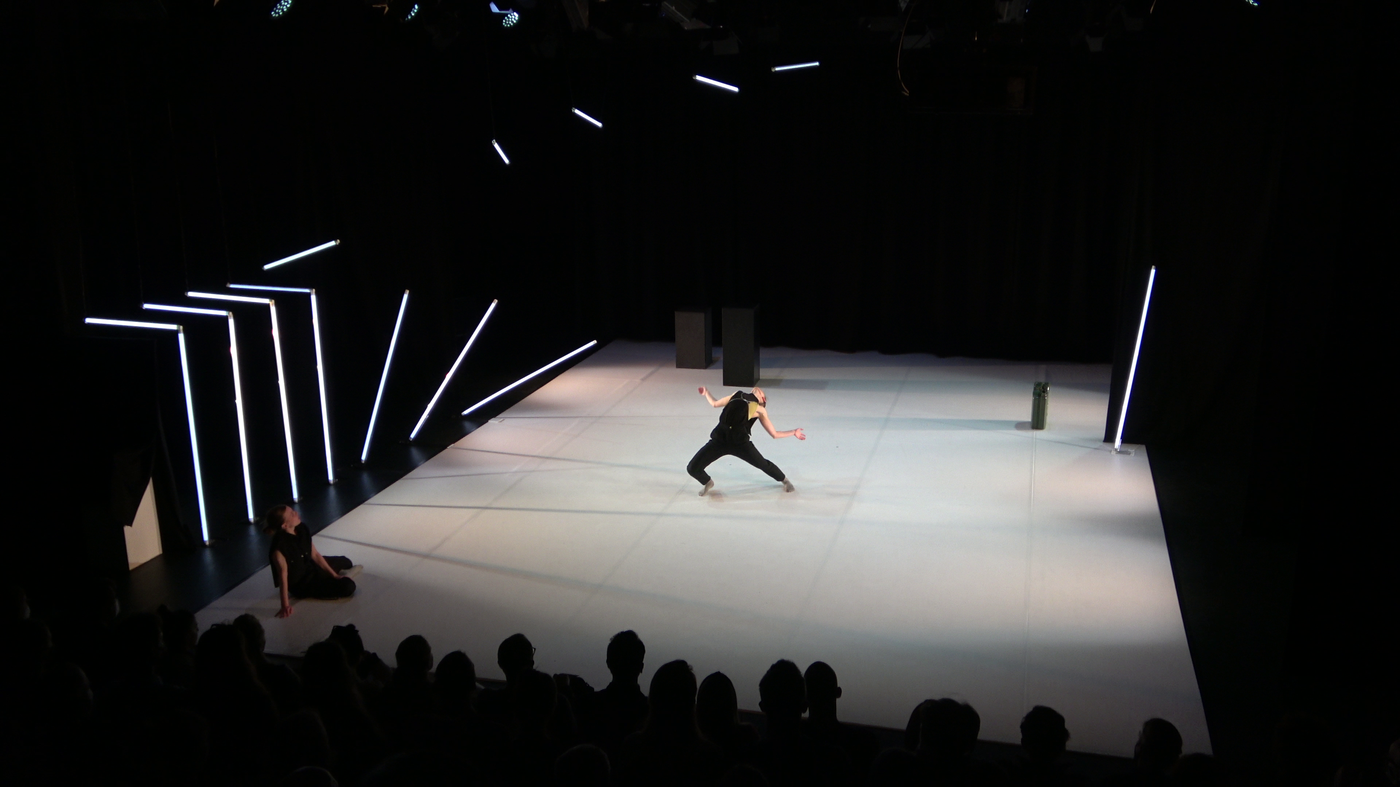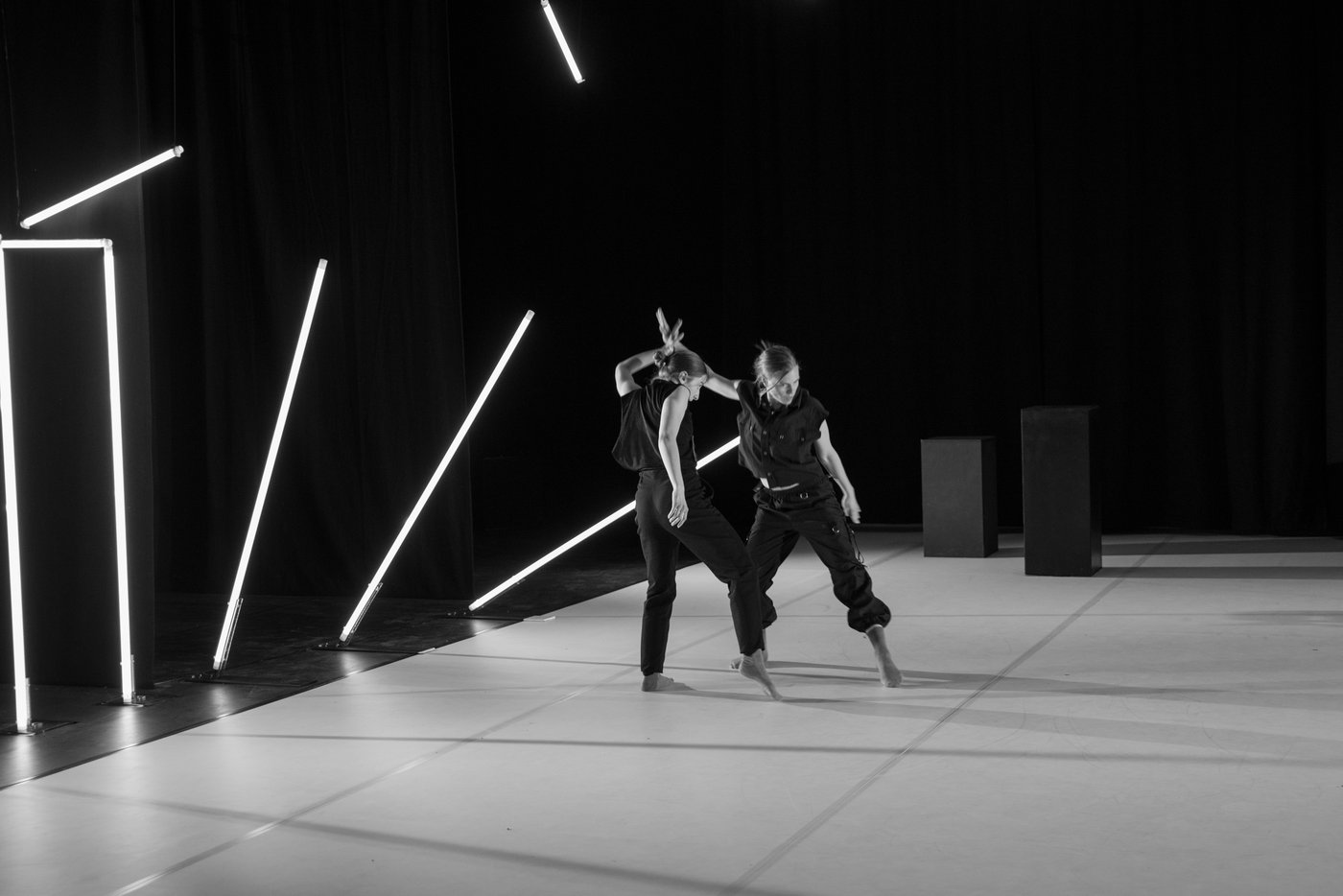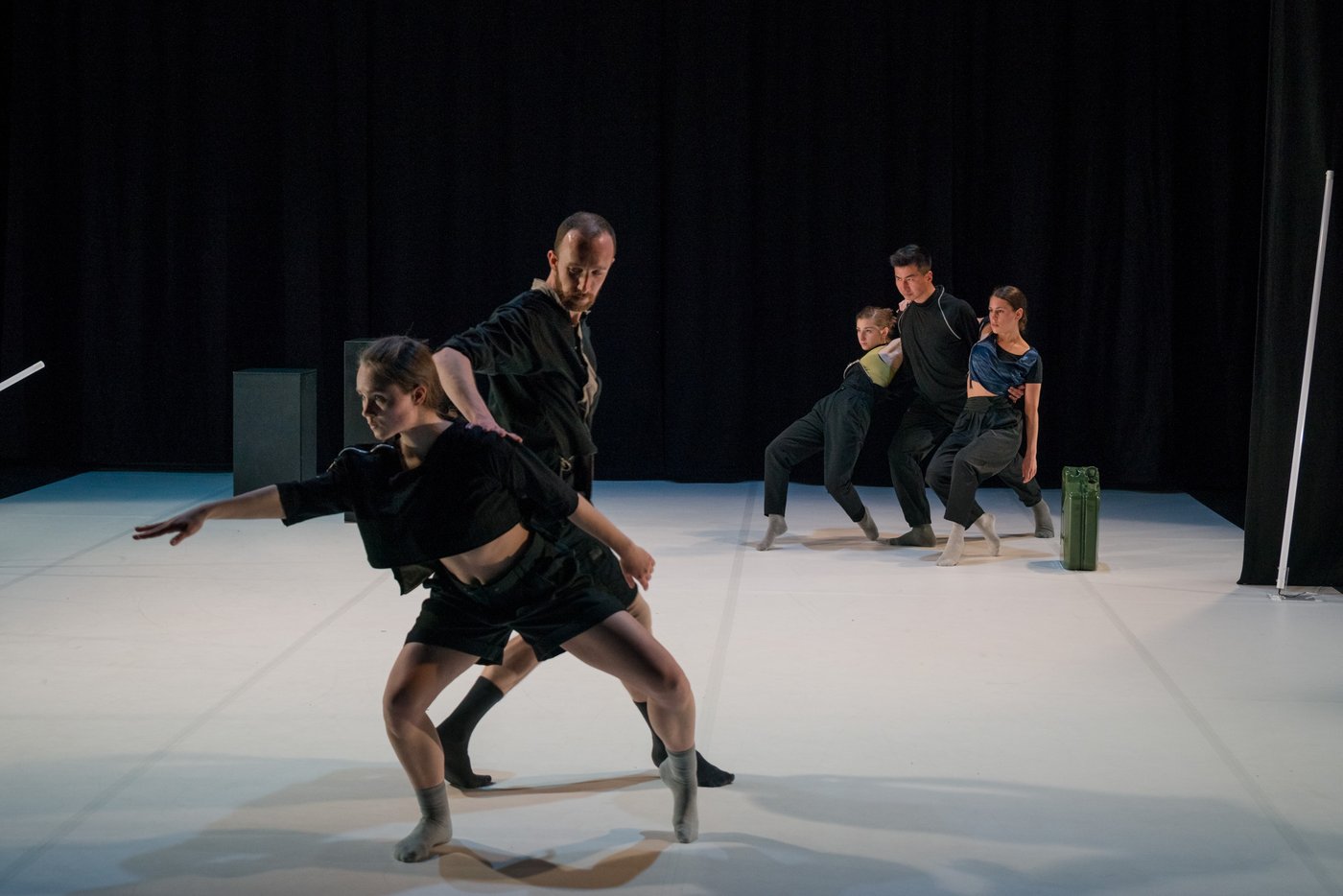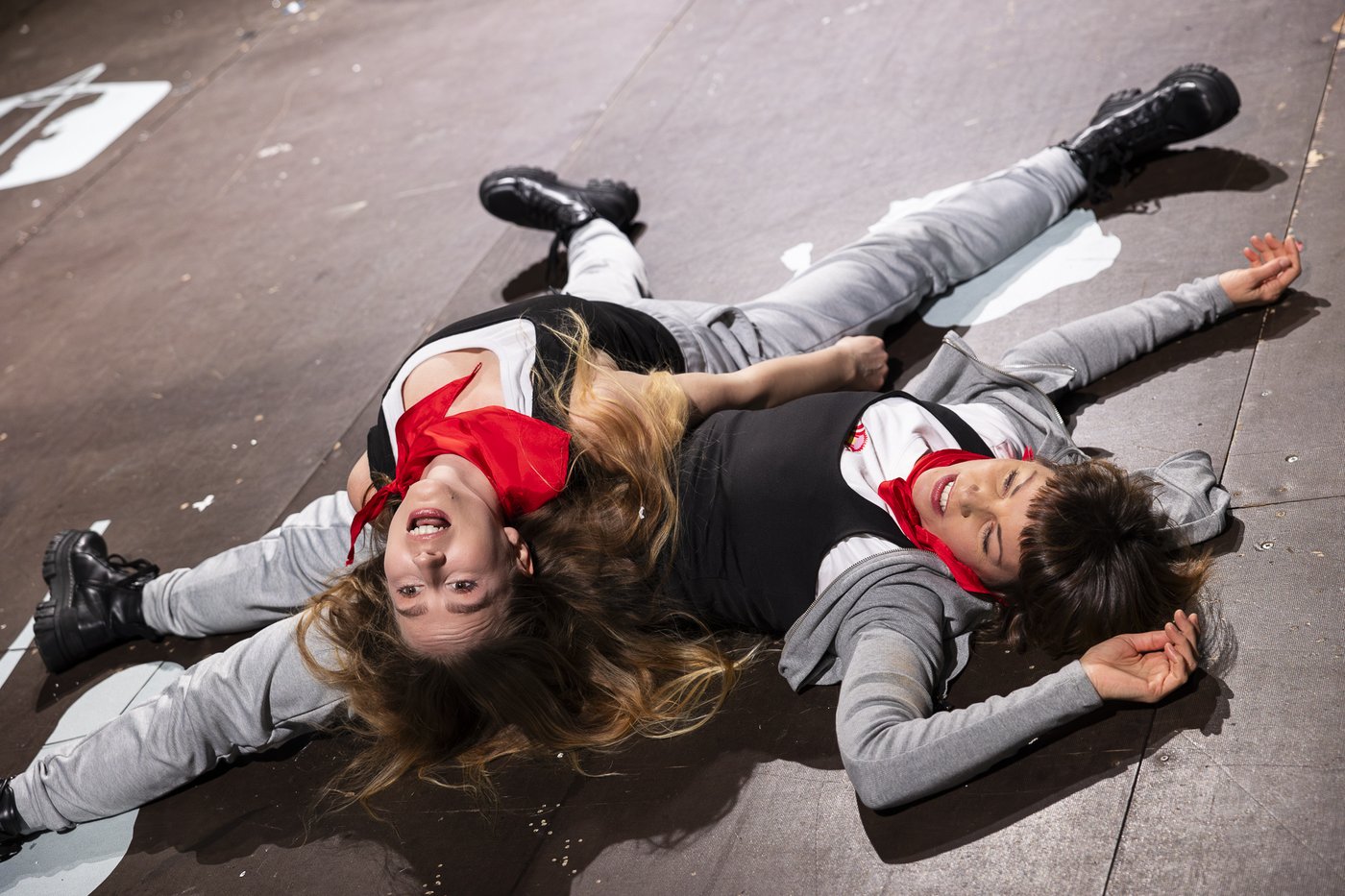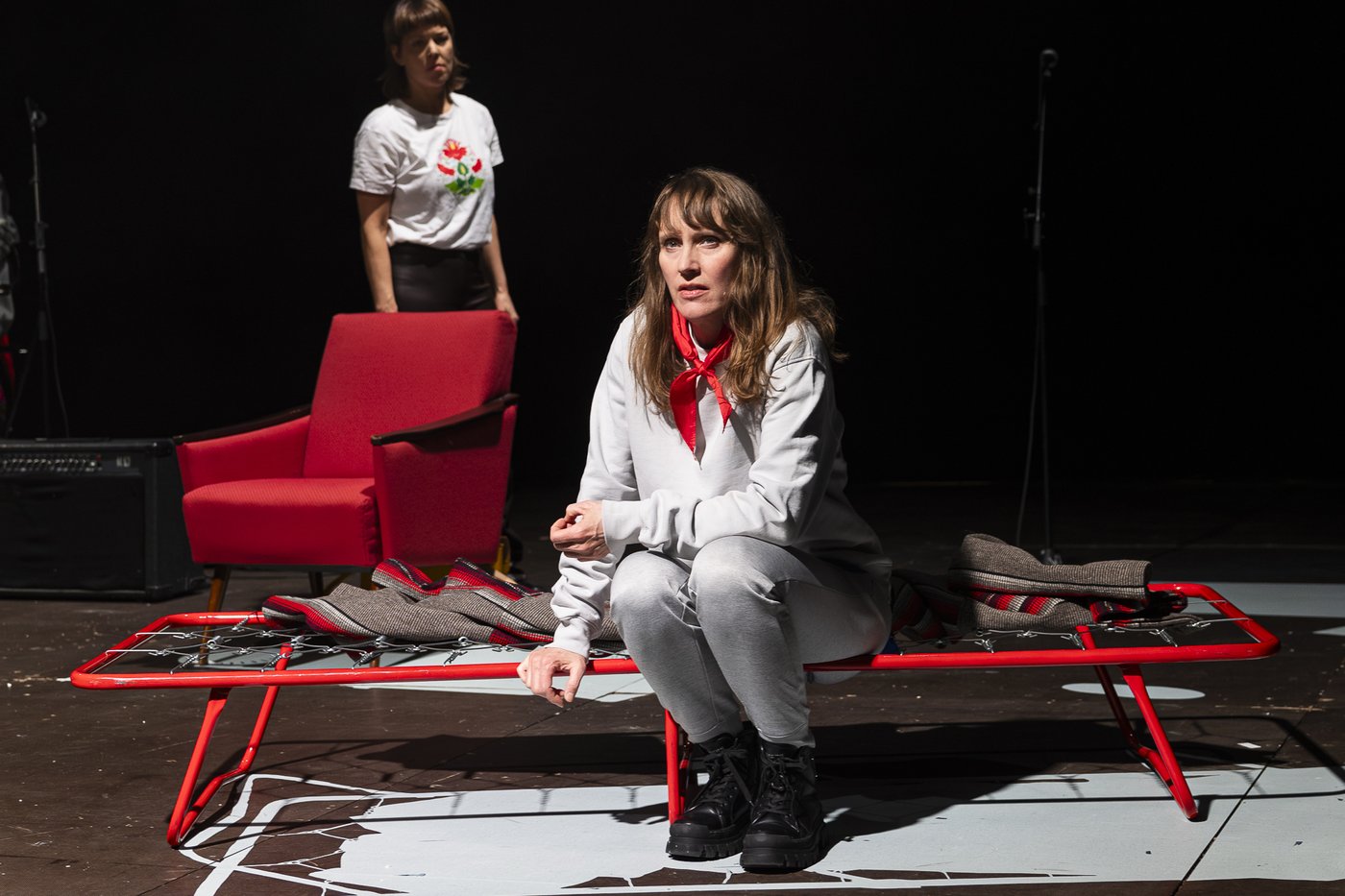Sophie Eidenberger
In conversation with Barbara Pflanzner, Academy Studio Program, Creative Cluster, March 19, 2024.
Before you started studying stage design at the Academy, you gained practical experience at the Thalia Theater and Neo Magazin Royale. What exactly did you do there and to what extent were these experiences important for your decision to start studying?
After finishing school, I studied theater, film, and media studies, and it was there that I discovered my interest in the aesthetic design in theater, especially because I find the visual aspects of a play to be the most impactful. I first wanted to find out what the practical side of this job actually looked like, partly because I didn’t have the courage to apply to the Academy at first. That’s how I ended up at the Thalia Theater, where I was responsible for extremely elaborate projects as an external prop master.
At Neo Magazin Royale, I worked in set design during an internship that lasted several months. It was a dream come true for me to work there, especially because I was interested in the political potential of the show, as well as theater. It was very informal there; I was able to do a lot myself; I was constantly given crazy tasks, and it was just really fun.
And then you came to the Academy and completed your studies in stage design with Nina von Mechow in 2020 with your diploma project Chemtrails over the Schillerplatz. What’s this project about?
As mentioned earlier, I started to become interested in the political potential of theater at an early stage. Throughout my studies, I repeatedly asked myself why theater is still being made today, whether it’s not in itself an outdated form, and why I still enjoy going to the theater. What is still interesting and relevant about it, and what can it tell us about today? Personally, I’m interested in where theater can be subversive, where it can take people out of their daily routines and bubbles, and where it can create experiences through its immediacy that can stimulate thought processes. For my thesis, I decided to address the scientific skepticism and the increasing prevalence of conspiracy theories that emerged during the COVID-19 pandemic and within my personal environment. Specifically, I focused on one of these myths, namely the chemtrails – the belief that airplanes spray chemicals used either for weather warfare or to make us all conform. For this, I designed an immersive obstacle course that led dramaturgically through the rooms of a former administrative building. I wanted to tell the story of a “classically broken down” conspiracy career, to make it somewhat understandable as to how one gets involved in such beliefs.
You now work as a freelance scenographer and costume designer. What kinds of projects are you interested in working on, and what aspects do you consider when selecting projects?
My focus is strongly on the environment in which the process takes place. A theater production is also a very intimate endeavor, where mutual respect and appreciative collaboration are crucial. During my time in institutionalized theater During my time in institutionalized theater, I noticed that this microcosm can easily become a hotbed for abuse of power – something I believe to be an open secret. In the independent scene, it often feels like there’s a mutual agreement that everyone will invest as much as possible in the project and is fully committed despite rather limited resources. Just recently, I made the costumes for the project Im Menschen muss alles herrlich sein, which is about women from Ukraine during the Soviet era. That was incredibly rewarding, because I got to learn a lot about the history of Ukraine myself. It’s important to me that there’s a context that’s relevant to today and I want people to be able to contribute something through direct experience.
The play premiered at Theater am Werk in February 2024. How did you approach the costume design?
I talked a lot with the director about the difficulty of not wanting to appropriate the women’s stories, to avoid personification, and to focus on telling the stories rather than directly illustrating them. The idea was to have the actresses initially appear as stage workers, from which the characters would gradually emerge. There was a form of basic costumes that were rather sporty and uniform, from which the characters slowly developed over the course of the play, for example by taking off and adding individual costume parts.
For Nikolaus Adler’s play Bright Red, which was performed at the WUK, you designed both the set and the costumes. The play was about the uniqueness of individuals; what did you focus on in your work?
The core of the play was about the uniqueness of the individual and the question of how to convey a person’s authentic passion without them explicitly stating what they love or describing themselves. For example, the main task for the dancers was to choose their favorite book but not to tell anyone which book it was. Through this indirect approach and working on tasks related to the favorite book, the aim was to get closer to an authentic passion. I adopted this principle as a model for my work on the set design and asked myself what individuality means to me. This resulted in my creating a light installation, a sort of framework that disassembles and reassembles itself. The costumes were black, with zippers placed in specific areas, revealing different materials and colors when opened.
I see various designs or sketches here in your studio. What are you currently working on?
I’m currently working on two plays for Dschungel Wien, which will be performed in September. Both are plays for teenagers. One is about pornography and how young people deal with it, given that they come into contact with the topic much earlier today through smartphones. The other, Erdmännchen, is about language, belonging, and what happens when one falls out of a uniform system.
I’m also currently working on costumes for a project at the Vienna State Opera. I’m fortunate to be part of a project by the group Nesterval, the largest group for immersive theater in the German-speaking world, and I’m designing the costumes for it. The piece is called Götterdämmerung? and will take place in the new venue of the State Opera in December 2024. This version of Götterdämmerung is immersive, meaning the audience can follow one of twenty different characters, each time seeing a different strand of the story, which is set in a dystopian Vienna in the future, marked by climate change. The aesthetic starting point for the piece is Fritz Lang’s film The Nibelungs. I pursue a very sustainable approach in my work, and primarily use the ART for ART inventory, because if we’re dealing with such a topic, it should also be reflected in the production. The idea was to work with the aesthetics of historical costumes that were familiar from the State Opera, creating an exciting contrast. Playing with deliberate contrasts is a hallmark of Nesterval’s work, particularly at the level of gender stereotypes.
